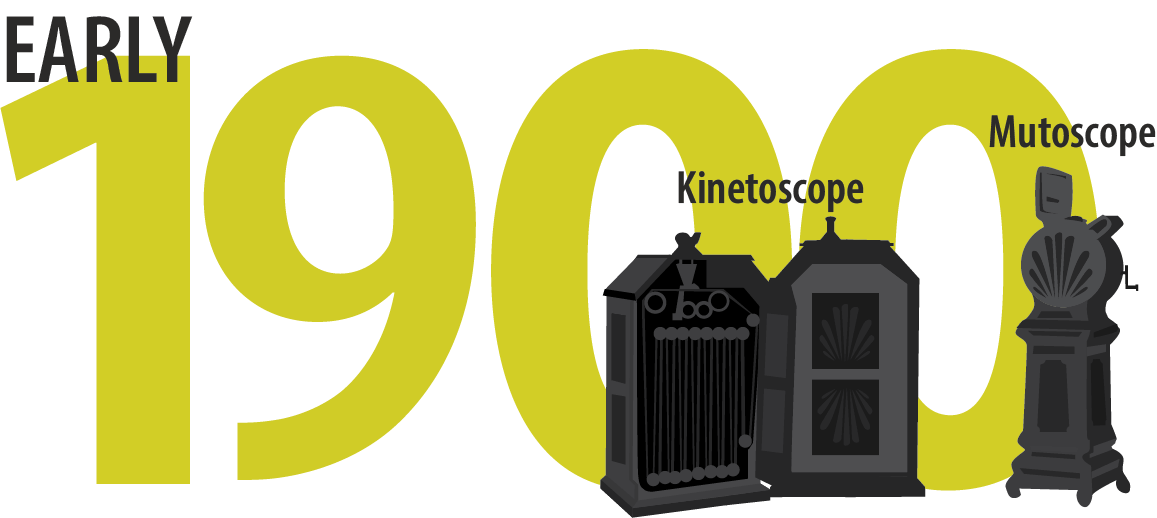The History of VR: 5 Eras Of Evolving A New Reality
Nov 21, 2019 | 42Gears Team

Virtual reality (VR), which uses head-mounted displays to simulate the experience of being in a virtual world, has found a place for itself in the home and in industry. Given that modern VR relies on cutting-edge technology to function, you might be surprised to learn that VR has a long history that predates modern computing. It’s a history well worth learning. In addition to being an interesting story in its own right, the history of VR can provide us with insight into how VR can succeed in the future.
For VR to become what it is today, three major factors needed to fall into place: powerful technology, affordable ways for the average user to access VR, and cultural awareness and acceptance of VR. Let’s trace these factors through a few different eras to learn more.
1. Before the 1960s
For thousands of years, the question of what it would mean to live in an illusion intrigued thinkers worldwide. For example, Plato’s Allegory of the Cave considers how people imprisoned in a cave since birth might think that shadows are alive, as the only moving things they could see are shadows. Plato wrote the Allegory to make a point regarding the pursuit of knowledge, but the allegory is most striking for modern readers because it describes a kind of immersive virtual reality several millennia ahead of its time.

Since the late 1800s, technology has enabled people to isolate themselves in new realities. For the first time, devices like the Kinetoscope and Mutoscope enabled users to see short motion pictures in a manner that completely enveloped the user’s vision. By the 1930s, the much-loved ViewMaster toy provided the illusion of three-dimensional panoramas, while red-blue glasses would bring a similar kind of immersion to motion pictures in the 1950s. Immersive experiences were very much in the public consciousness by the mid-20th century, and virtual reality technology would soon emerge as the ultimate immersive experience.
2. 1960s
The 1960s witnessed the development of the first technologies we would recognize in the modern day as key components of virtual reality. For example, motion-tracking head-mounted displays (HMDs) came into use in the early 1960s for remote surveillance of dangerous military situations.
A few years later, computer scientist Ivan Sutherland published a remarkable paper entitled The Ultimate Display. In it, Sutherland tried to extrapolate from contemporary trends in computing to determine the most advanced computing interface that could possibly exist. Although Sutherland does not use the term “virtual reality” to describe “the ultimate display,” he paints a picture of an immersive environment where virtual objects are indistinguishable from real-life ones; for all intents and purposes, the “ultimate display” is virtual reality.

Sutherland’s contributions to the field in the 1960s went beyond the theoretical; several years later, in 1968, Sutherland built the first VR HMD, a huge, ceiling-suspended machine known as the Sword of Damocles. Although its graphical capabilities were rudimentary, the Sword of Damocles succeeded in making its users feel present in the virtual world, revealing VR’s enormous potential for immersion and engagement.
3. 1970s and 1980s
The next few decades would be shaped by the first public awareness of VR, and by the restrictive technical requirements with which VR systems of the era were burdened. The massive size and cost of the computing systems necessary to run VR experiences meant that no sort of home use was feasible.
For highly advanced organizations, however, VR technology was not prohibitively costly. Large corporations matured VR technology through the 1970s and 1980s. For example, NASA utilized VR with the intention of remotely controlling machines to complete dangerous tasks; this line of research ultimately stagnated, as the technology of the era was not sufficiently powerful, intuitive, or immersive for the needs of organizations like NASA.
Although still an abstract concept for the vast majority of people, virtual reality began to make its way into public awareness in this era. William Gibson’s seminal science-fiction novel Neuromancer, which depicts a group of hackers exploiting an elaborate shared simulation known as cyberspace, served as many readers’ first introduction to the concept of virtual reality.
Some of the first vocal VR advocates made waves with their striking rhetoric in this era, as exemplified by VR pioneer Jaron Lanier. Lanier helped to create the EyePhone and DataGlove, which together formed one of the most advanced VR interfaces of the era. Lanier put these devices to good use as he demoed VR technologies by creating “virtual worlds” for his guests to explore, highlighting the endless possibilities inherent to VR. He looked forward to the day that a sufficiently powerful computer (which he dubbed the “Home Reality Engine”) could provide a totally convincing and seamless experience for VR users.

His rhetoric may have worked perhaps too well- public excitement for VR developed much more quickly than the technology itself, setting up VR in the 1990s for a turbulent decade.
4. 1990s
The 1990s were a promising time for VR. VR had a substantial impact on media in the 1990s through VR-focused films like Lawnmower Man and novels like 1992’s Snow Crash. While advocates like Lanier continued to sell the promise of VR, more pundits from other fields joined in; a once-prominent psychedelics advocate, Timothy Leary, even viewed VR as a successor to LSD.
The 1990s also marked the first time that major industry leaders believed that VR could have a major impact on consumer culture. A number of famous (and infamous) devices were released during this time, many of them known for their poor quality; this would unfortunately influence the public perception of VR up until the 2010s.
The average consumer now could feasibly enjoy VR video games, both in the home and in arcades. The most technically proficient of these experiences were arcade setups designed by the company Virtuality. In the arcade, Virtuality had enough space to combine powerful computers and helmets and provide thrilling and immersive experiences (for the time, at least) that even allowed multiple people to see each other at once in the simulation. The success of Virtuality’s systems was still limited, however, because the system was expensive and required constant monitoring by a trained attendant. Several major gaming companies tried to enable VR gaming within the home, and were generally less successful; some products were widely panned for being eye-straining and nauseating (Nintendo’s Virtual Boy), while others hit insurmountable technical obstacles and never released to consumers (such as the Sega VR headset).

In the end, VR did not catch on with the public in this era as expected, and faded into comparative obscurity by the late 1990s and 2000s. In a retrospective on VR in the 1990s, Lanier speculated that this failure could be attributed to many factors, including a combination of inadequate technology, unreasonably high expectations, companies trying to position poor-quality VR products as new industry standards, and widespread uncertainty regarding how a novelty like VR could play a role in day-to-day life.
5. The Present
The sleek headsets that characterize modern VR technology are almost unrecognizable compared to their predecessors. By weighing less, costing less, providing a broader field-of-view, and displaying substantially more elaborate graphical output, modern VR is far more immersive than any VR system released to date.
VR has also become more financially accessible to consumers than ever before. Especially with headsets that utilize the displays on consumers’ mobile devices, such as Google Cardboard, consumers need only a minimal investment of time and money to access virtual worlds. More powerful VR HMDs dedicated to gaming, such as Sony’s PSVR system, have been commercially successful and boast a robust schedule of software releases set for the foreseeable future.

This commercial success provides reason for VR fans to be optimistic, but at the same time, other trends suggest that widespread consumer adoption of VR is still uncertain. Companies such as IMAX have invested in elaborate VR arcades, but shuttered such establishments soon after opening them due to low public interest. Consumers often favor augmented reality (AR) technologies over VR technologies, as best exemplified by the worldwide phenomenon of Pokemon Go.
The first true success story of VR is in modern business, where the technology is used for employee training and has taken the industry by storm. For the first time, VR provides a clear benefit for any business that can save companies money. By entering VR simulations and handling simulated emergency scenarios in a safe environment, employees remain more engaged than they would be during conventional training exercises, and perform better as a result. Recent years have seen corporate giants such as Walmart make massive investments in VR headsets. This way, employees at every store in a company’s system can receive the same high-quality training using pre-programmed VR experiences. See here for more ways that VR can be useful for businesses.
In fact, VR headsets have become so well-established in business settings that some endpoint management software, including 42Gears’ SureMDM, is now capable of managing VR devices in the same framework as phones, tablets and computers. This manageability allows employers to troubleshoot VR devices remotely, permit or block specific applications, and much more.
Conclusion
What does the history of VR teach us about the future of VR? For one, it is important that VR providers do not promise more than they can actually deliver, or else that industry could stagnate as it did in the 1990s. Additionally, any given implementation of VR needs to serve a purpose; the novelty of VR cannot sustain the industry alone.
In the near future, VR may cede market share to AR devices, but neither VR nor AR will go away any time soon. This means that businesses should have a way to manage both VR and AR devices. 42Gears’ UEM software can help! Learn more here.
42Gears VR Management
Use 42Gears endpoint management technology to lock down VR devices into kiosk mode.
Subscribe for our free newsletter
